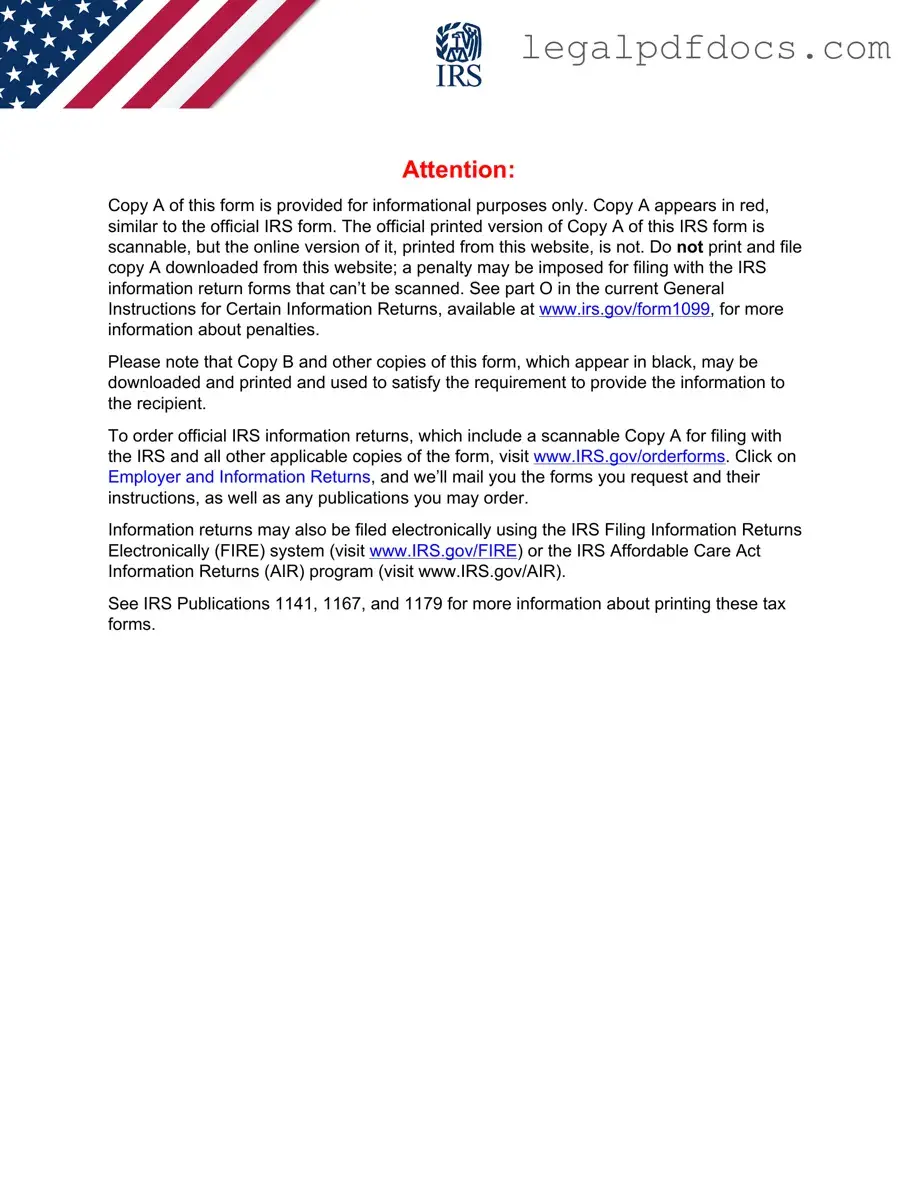The 1099-NEC form plays a crucial role in the reporting of nonemployee compensation for tax purposes. Designed for use by businesses that pay independent contractors or freelancers, this form is essential for ensuring compliance with IRS regulations. It captures vital information such as the payer’s and recipient’s taxpayer identification numbers, the total amount of nonemployee compensation paid, and any federal or state taxes withheld. Notably, the 1099-NEC must be filed with the IRS by January 31st each year, making timely submission critical to avoid potential penalties. The form is available in both printed and electronic formats, but it is important to note that only official IRS copies are scannable. Therefore, businesses should refrain from using downloaded copies for filing. Additionally, the 1099-NEC includes instructions for recipients, clarifying that they must report the income listed, even if no taxes were withheld. This aspect emphasizes the importance of accurate reporting for both payers and recipients, as failure to do so can lead to significant tax implications. Understanding the nuances of the 1099-NEC is vital for any business engaging nonemployees, ensuring that all parties fulfill their tax obligations effectively.
